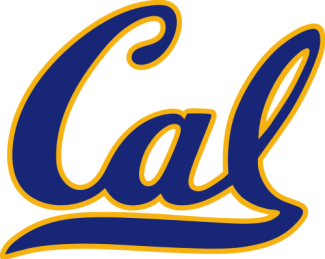David Neeleman, a Brazilian American entrepreneur and Utah alumnus who has founded four commercial airlines, is the primary benefactor underwriting much of the cost of operating the program. Neeleman and other private donors have endowed the men’s lacrosse program through a $15.6 million gift.
“It’s the first endowed program for University of Utah athletics,” athletic director Chris Hill said in a press release Friday. Men’s lacrosse is Utah’s first completely new NCAA sport since it added women’s soccer in 1995. “Nowadays, adding sports at the college level almost always requires an endowment, which resonated with the university-appointed committee.”
Neeleman tabbed Holman last year and together they laid out a blueprint for elevating the Utah club program. Holman assembled a high-profile staff that included his son, Marcus, and fellow Major League Lacrosse all-stars Manny and Ghitelman.
In addition to leading the Utes to the MCLA playoffs for just the second time in club history, the four coaches became immersed in the state’s burgeoning lacrosse community, hosting camps and clinics while also serving local youth programs. Brian Holman is a volunteer board member of Intermountain Lacrosse, which in February merged with the Greater Utah Lacrosse League to form one of the largest youth lacrosse leagues in the U.S. More than 4,500 boys and girls from kindergarten through eighth grade compete in Intermountain Lacrosse, which has worked with US Lacrosse to deploy the Lacrosse Athlete Development Model and field nationally certified coaches and officials.
“There were a lot more factors important to us than just coming out here and saying, ‘Hey, we’ve got a program.’ Yes, that’s part of it, but also we have the opportunity to affect the game in a great way — more than we ever would have individually if we would have just gone on and coached at Carolina or Harvard or USC or Maryland,” Holman said. “This is a shift. We’re hoping the state of Washington sees it, or Oregon. Then you’re affecting the game at a level that needs to be affected right now.”
Utah lacrosse coach Brian Holman with assistants (right to left) Marcus Holman, Will Manny and Adam Ghitelman.
Utah’s club team finished 10-7, including a season-opening upset of 2016 MCLA champion Chapman. The Utes were ranked No. 10 in the final MCLA poll. The team sold roughly 1,000 season tickets ranging from $59 to $99 for home games this year.
“I really dream of a time when I can walk into a conference room in New York, and half the businessmen in the room will be talking about Utah’s lacrosse game over the weekend,” Neeleman, whose son, Seth, is a freshman long-stick midfielder for the Utes, told the Salt Lake Tribune in April. “It’s really a huge opportunity for the sport and the university.”
Earlier this year, Marcus Holman said he believes the Utah lacrosse community has the potential to rival that of Denver, where Tierney not only led the Pioneers to the West’s first NCAA title in 2015, but also sparked additional interest in the sport locally.
“After being out here for a couple months and trying to relate it to another city, I feel like it’s what Denver was 10 years ago,” he said. “Denver always had a love for lacrosse, but it didn’t really explode until Bill Tierney moved out there. It just kind of snowballed from there. We’re trying to create a similar effect here.”
Utah officials have not yet committed to a conference affiliation. Brian Holman mentioned the Big East, ironically, as a potential landing place for the Utes, with Denver and Marquette competing in the conference. The Southern Conference, in which Air Force and Bellarmine participate, also has appeal. Holman would not rule out affiliate membership with a Power Five conference like the ACC or Big Ten.
The ultimate goal, of course, is to provide a compelling example other Pac-12 institutions will follow in adding men’s lacrosse to their offerings, giving the sport a true western front. The conference will sponsor women’s lacrosse starting in 2018, with six teams — Arizona State, Cal, Colorado, Oregon, Stanford and USC — giving it an automatic qualifier to the NCAA tournament. Three of those universities added programs within the last five years. Arizona State will debut in 2018.
Holman and Tierney both said they have met privately with Pac-12 commissioner Larry Scott, who visited Utah twice this year and attended meetings of the New Sport Working Group.
“He dearly wants this to happen,” Holman said.
Tierney predicted that Utah’s decision to add Division I men’s lacrosse would be a “huge wakeup call” to the other Pac-12 schools.
“Our country is built on supply and demand. There are thousands of kids in California alone playing this game,” Tierney said. “All of a sudden a lot of kids are knocking on the door saying, ‘I want to come to USC, UCLA, Washington, Oregon, Colorado.’ Eventually, someone’s going to listen and figure out the Title IX issue like Michigan did and like Utah has.”
Holman, meanwhile, remains committed to bolstering the sport’s presence within the state of Utah. And local lacrosse advocates share his vision. In May, the Utah High School Athletic Association voted to sanction boys’ and girls’ lacrosse starting in 2019-20.
Bob Caldwell, president of Intermountain Lacrosse, said the buzz about the Utes helped to unify the youth leagues and to advance high school sanctioning efforts, which in return provided a groundswell of support at the university level.
“We look at it as a perfect storm,” Caldwell said. “The opportunity to have an integrated approach to lacrosse from K to D-I is unique in the country. We think it opens opportunities to accelearate the growth of lacrosse not just in Utah, but to form a template that can be followed nationwide.”
“That is why we came out here, to change the face of lacrosse a little bit,” Holman said. “We feel with our knowledge and our passion and our experiences in the game, we want to create something different. What’s good for the game, what’s good for the kids and what’s good for the university? These are constant questions we always ask and will continue to ask moving forward.”
Utah joins Michigan (2012) as the only schools from Power Five conferences to add men’s lacrosse in the last 35 years. With St. Bonaventure also coming on board in 2019, the once-stagnant NCAA Division I ranks have swelled from 60 in 2010 to 73 in 2019.


























































